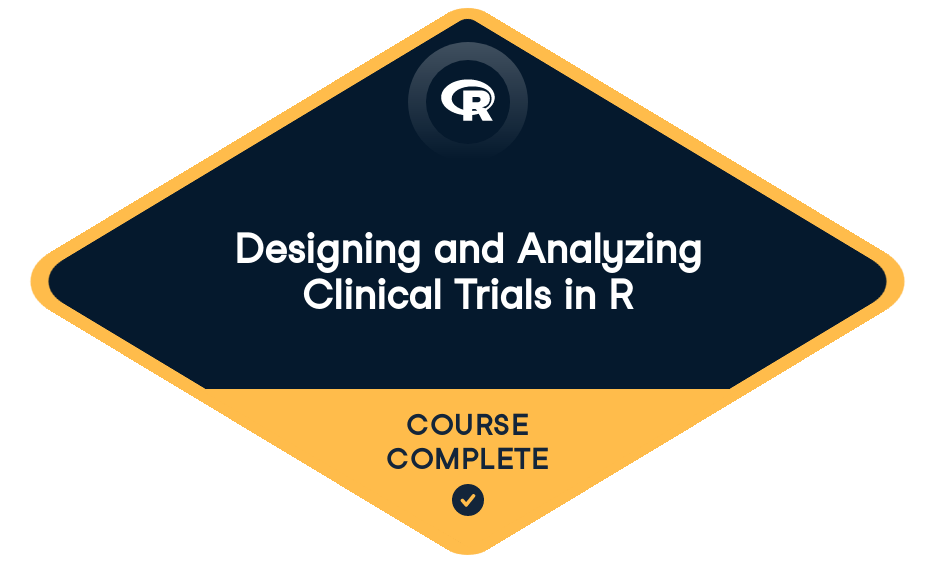Tibor Héja has completed
Designing and Analyzing Clinical Trials in R
Start course For Free4 hr
4,000 XP

Loved by learners at thousands of companies
Course Description
Clinical trials are scientific experiments that are conducted to assess whether treatments are effective and safe. They are used by a variety of organizations, including pharmaceutical companies for drug development. Biostatisticians play a key role in ensuring the success of a clinical trial. In this course you will gain an overview of the important principles and a practical introduction to commonly used statistical analyses. This course would be valuable for data analysts, medical students, clinicians, medical researchers and others interested in learning about the design and analysis of clinical trials.
Training 2 or more people?
Get your team access to the full DataCamp platform, including all the features.- 1
Principles
FreeIn this chapter you will be introduced to the important principles of clinical trials.
Fundamentals50 xpData exploration100 xpPatient characteristics100 xpTypes of data and endpoints50 xpExploration of continuous endpoints100 xpExploration of binary endpoints100 xpExploration of composite endpoints100 xpBasic statistical analysis50 xpComparing means100 xpComparing distributions100 xpComparing proportions100 xp - 2
Trial Designs
In this chapter you will be introduced to randomization methods and different types of trial designs.
Randomization methods50 xpSimple randomization100 xpBlock randomization100 xpStratified randomization100 xpCrossover, factorial and cluster randomized trials50 xpFactorial designs: exploring data100 xpFactorial designs: generating odds ratios100 xpEquivalence and non-inferiority trials50 xpEquivalence trials100 xpInterpreting results from equivalence trials50 xpBioequivalence trials50 xpConcentration profiles100 xpPharmacokinetic parameters100 xp - 3
Sample Size and Power
By the end of this chapter you will be able to calculate the numbers of patients needed for a clinical trial under a range of scenarios.
Introduction to sample size and power50 xpSample size for comparing means100 xpSample size and treatment difference100 xpSample size for comparing proportions100 xpSample size adjustments50 xpSample size for unequal groups100 xpSample size for one-sided tests100 xpInterim analyses and stopping rules50 xpStopping rules100 xpSample size adjustments for interim analyses100 xpSample size for alternative trial designs50 xpSample size for equivalence binary outcomes100 xpSample size for equivalence continuous outcomes100 xp - 4
Statistical Analysis
In this chapter we will explore additional statistical techniques that are commonly used to analyze data from clinical trials.
Training 2 or more people?
Get your team access to the full DataCamp platform, including all the features.collaborators



prerequisites
Introduction to Statistics in RPhD. Biostatistician
Tamuno Alfred is a biostatistician with experience in the pharmaceutical industry and in academia. She has worked on several clinical trials and epidemiological studies. Tamuno has an MSc in Medical Statistics and a PhD in Genetic Epidemiology.
Join over 18 million learners and start Designing and Analyzing Clinical Trials in R today!
Create Your Free Account
or
By continuing, you accept our Terms of Use, our Privacy Policy and that your data is stored in the USA.